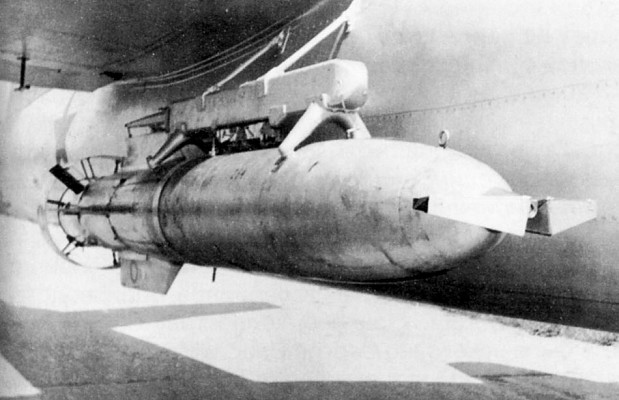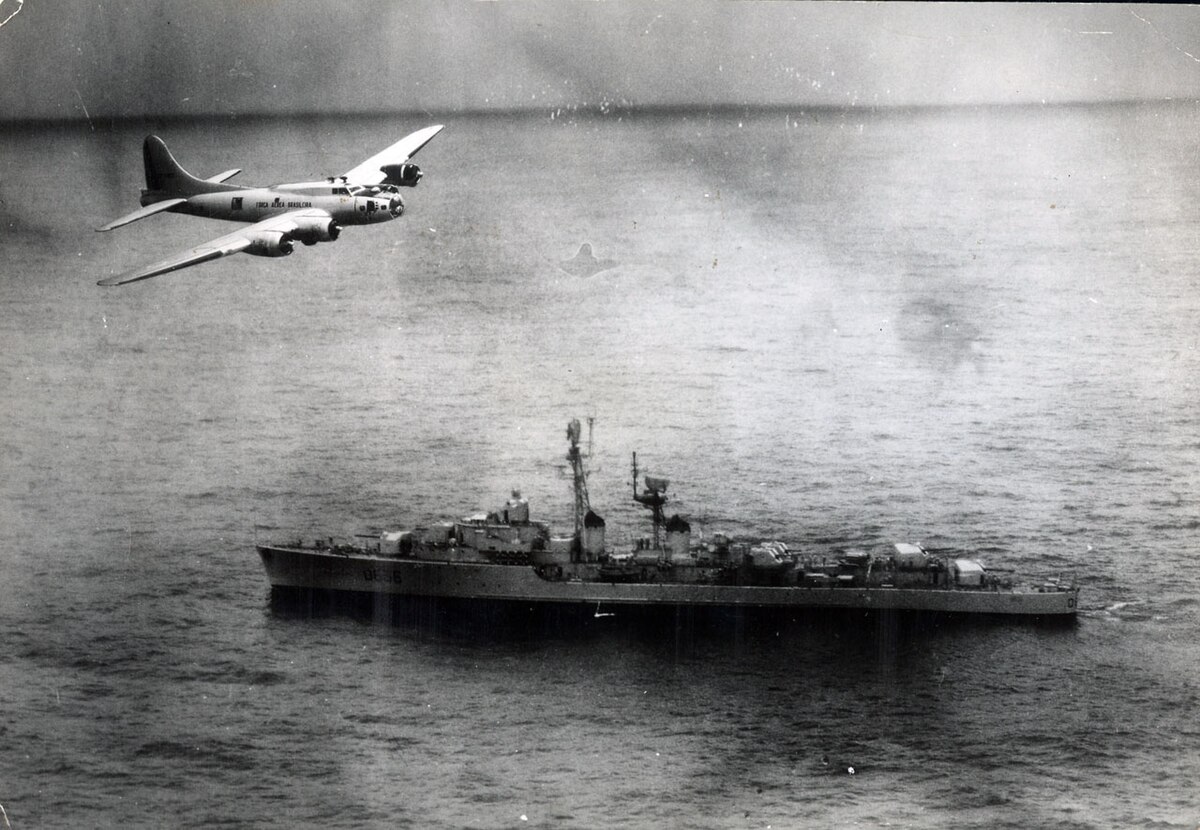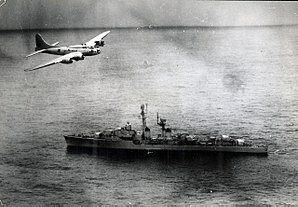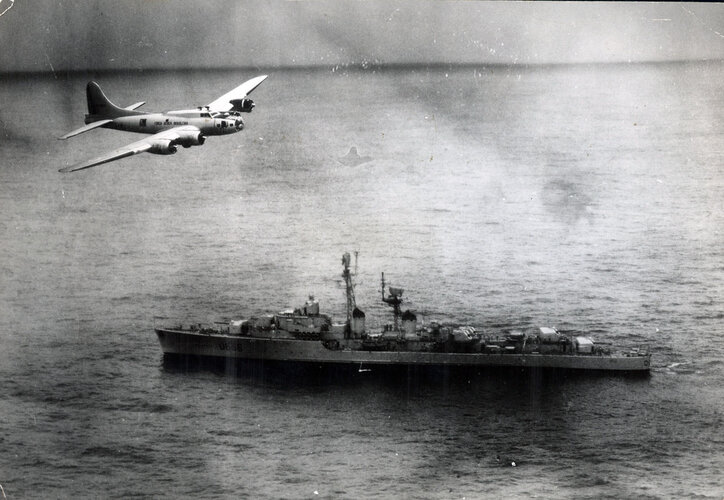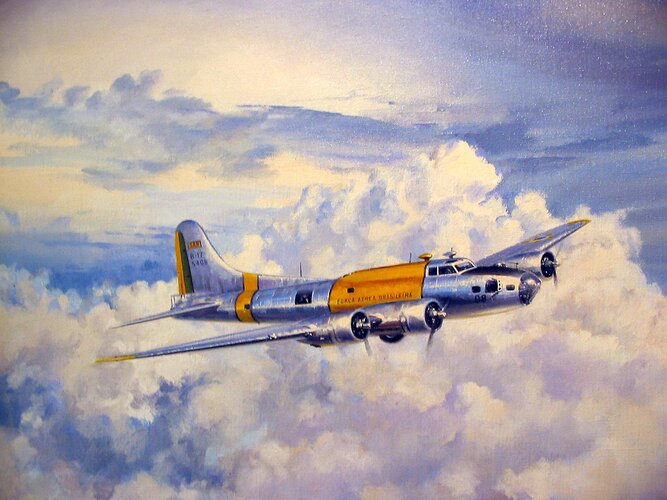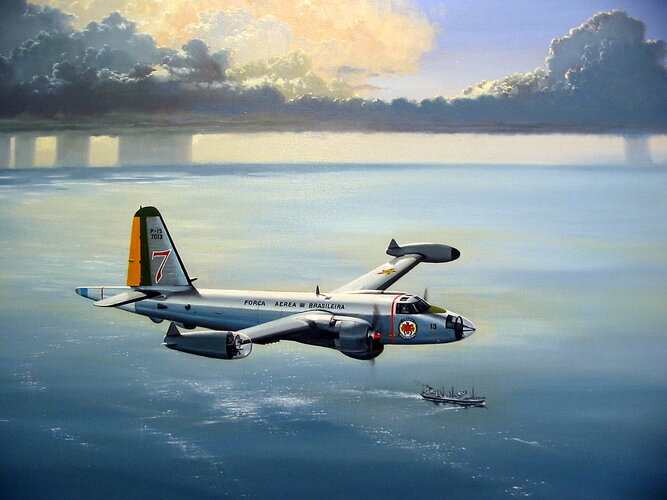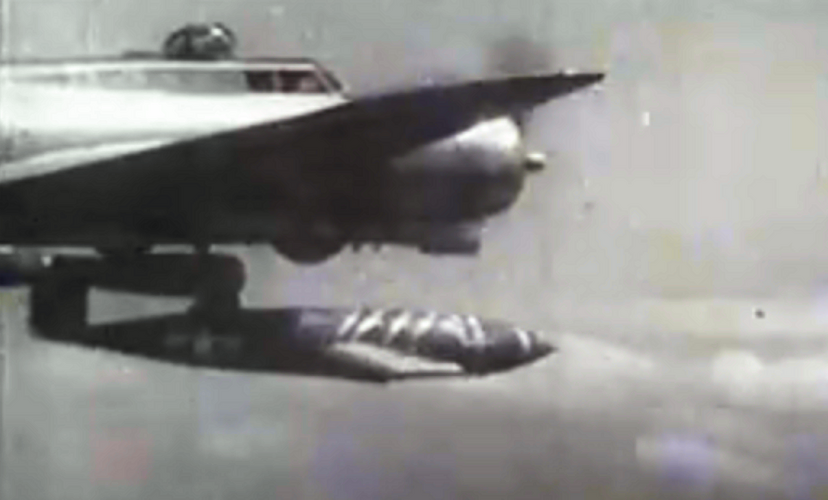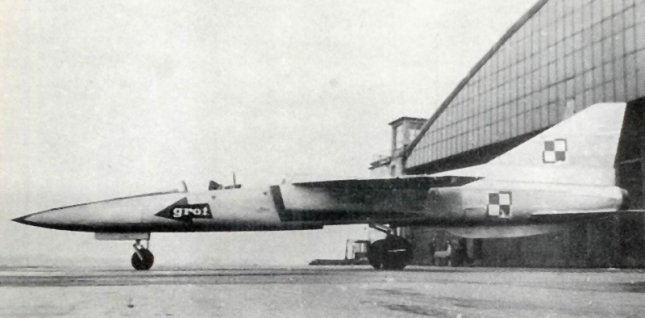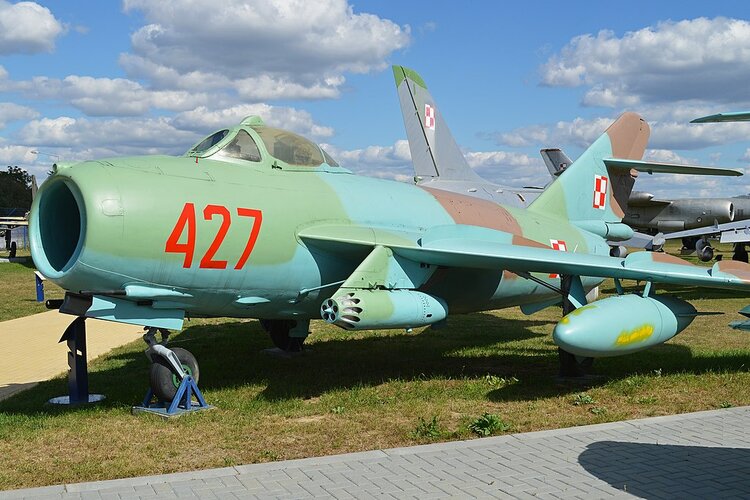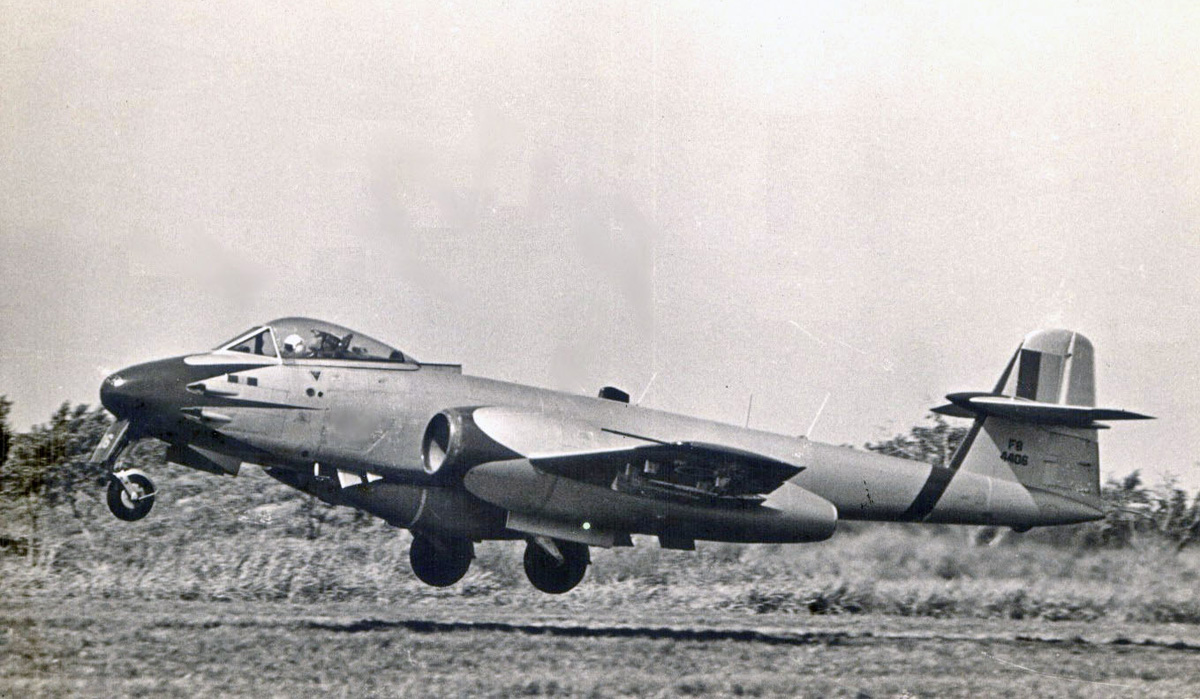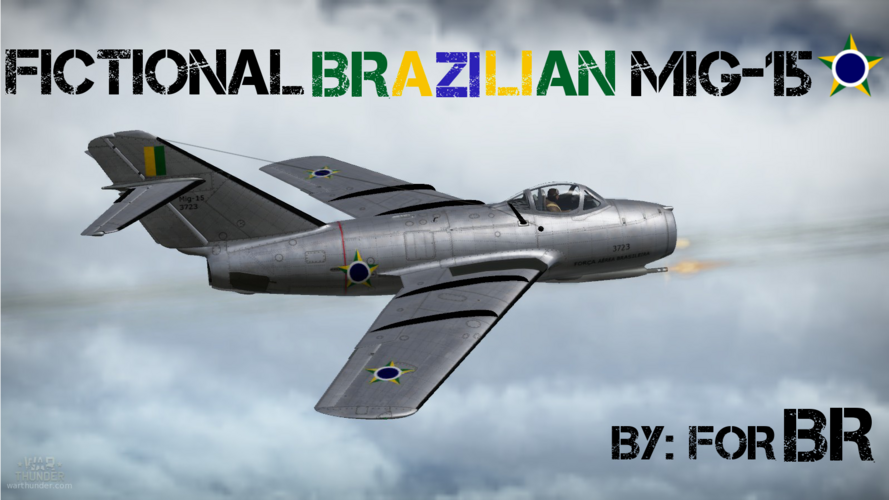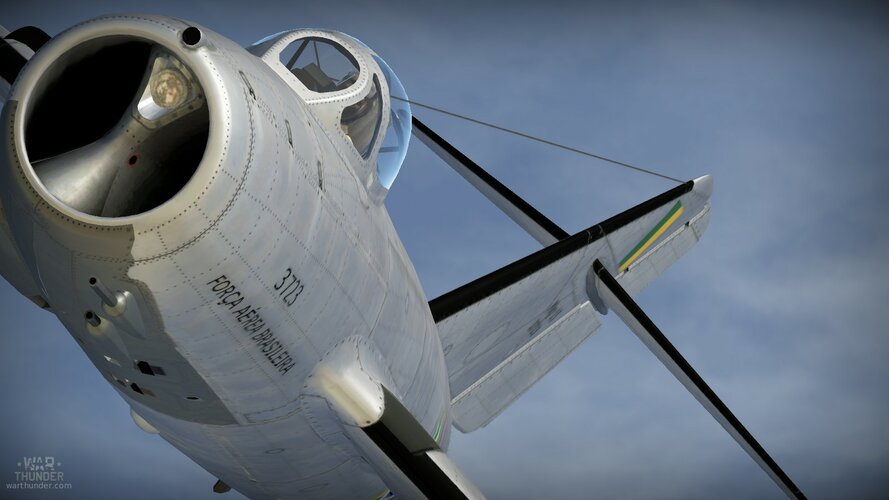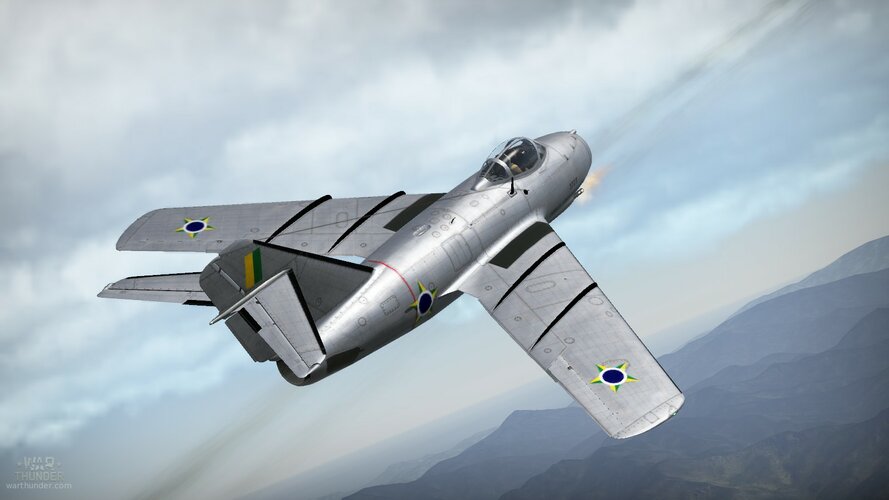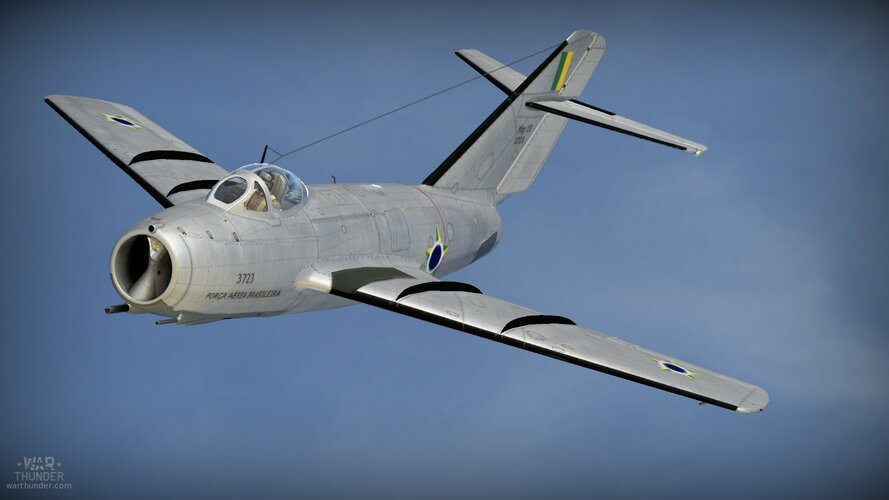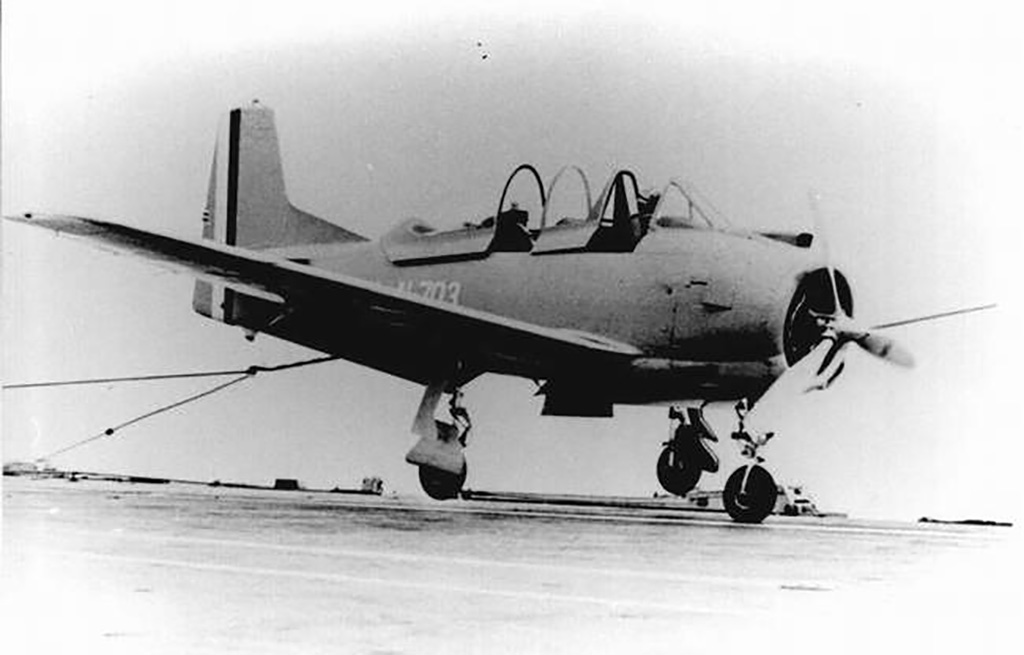https://www.secretprojects.co.uk/threads/pzl-ts-16.1766/ I am thinking also this one especially the attack variant could be the case !
TS-16 (TS-13) "Grot", 1963
Design of a fighter-attack and training aircraft. Poland.
Mock-up of the TS-16 "Grot" fighter-attack and training aircraft. (Source: Aviation International, August 1991).
When the intensity of design work on the
TS-11 "Iskra" aircraft reached its peak, work began on the
TS-13 "Grot" supersonic training aircraft . The aircraft was intended for student pilots in the last year of training, significantly advanced in piloting subsonic aircraft. In mid-1958, a separate team of the design office of doc.
Tadeusz Sołtyk at
the Aviation Construction Center at WSK Okęcie , he began studying such an aircraft. In 1959, a preliminary version of the design was created with a double-trapezoidal wing, similar to the wing of the
F-101 "Voodoo" aircraft . The drive was to consist of two designed at
the Institute of AviationSO-2 engines with afterburner, and the aircraft was characterized by high performance: flight speed, rate of climb and ceiling. In addition to training and training, certain elements of combat operations could be performed on the machine. The aircraft was also to be capable of operating in field conditions from airfields with grass surfaces. According to this concept, the first aerodynamic model of the aircraft was made.
Information about the world's first supersonic training aircraft Northrop T-38 "Talon" (and its N-156 fighter version, later designated
Northrop F-5 "Freedom Fighter") , announced at that time , and the results of aerodynamic tests of the model influenced a clear modification of the project . The aircraft was ordered by the military aviation. At the same time, the military aviation expressed the wish that the aircraft did not have No. 13 in its designation. Since it was felt that the drawings could be converted from 13 to 16 quite easily, the aircraft was designated
TS-16 .
It was planned to build two versions:
-
TS-16A - a single-seat fighter-assault designed to perform tactical fighter-assault tasks, i.e. combating moving and stationary ground targets with the use of 2 on-board cannons, missiles and bombs,
-
TS-16B - a two-seat training training facility, which was to be used for training and training crews of supersonic combat aircraft, especially in the field of piloting high-speed aircraft.
The assumptions of transforming version
B into version
A provided for the least number of changes. Due to the stronger armament in the front of the hull of the
A, the radio equipment was moved to the second cabin, leaving the cabin cover unchanged - long with glazing, the same as in the
B version .
The TS-16 aircraft was to have a wingspan of 7 m, a length of 13.9 m and a bearing surface of 19.2 m 2 .
The work proceeded quickly and the
TS-16 study was completed in December 1959. Since the SO-2 engine was still in the design phase at that time and its real properties were not known, it was decided to develop a second form of the machine powered by the then available RD-9B engine to speed up the implementation of the project, which was used to power
Mikoyan MiG-19 aircraft .
The TS-16RD study was completed in July 1960, with two versions also envisaged:
-
TS-16RD-A - single-seat fighter-assault,
-
TS-16RD-B - two-seat training and training.
The designed aircraft was characterized by original modern solutions. The swept wings with a two-trapezoidal outline had a laminar symmetrical profile. The step on the leading edge acted similarly to the aerodynamic guiding comb - it strengthened the jets and prevented them from flowing down the wings. Instead of classic ailerons, elevons (eeleons) were used in the empennage, serving as ailerons and elevator. The semi-monocoque fuselage was designed according to the field rule, and its construction differed depending on the version of the aircraft. To shorten the landing roll, the use of a tape braking parachute was envisaged.
TS-16was to be equipped with radio navigation and radar equipment, including with a radio rangefinder and a radar gunsight. In order to streamline the training process, the use of a damage simulator was envisaged. 23 mm cannons were adopted as the basic armament, while allowing for the use of additional equipment and armament on external suspension points.
By 1963, a complete preliminary design of the
"Grot" aircraft was developed at the Institute of Aviation . Two models were made for the tunnel tests: one for a large tunnel and a smaller one with metal wings. This was followed by aerodynamic blowing, including in the supersonic tunnel. A single-engine
TS-16RD mock-up was built for the evaluation committee. However, work on "Grot" was suspended. Several factors contributed to this. Influence of the Soviet Union preventing the development of combat aircraft in Poland, economic constraints, change in the leadership of the air force and change of views on the need to use supersonic training aircraft in the course of training, and above all, the change in the attitude of the ruling team of Władysław Gomułka to the aviation industry and his aspirations to liquidate aviation production, in particular in particular in Warsaw, converting it to the production of tools. TS-16RD "Grot" remained in the preliminary design stage and in the form of a life-size mock-up.
It is worth noting that "Grot" was the second supersonic training aircraft designed in the world. At the same time, a competitive
PZL M-16STN (supersonic training aircraft) project similar in shape to the Northorp N-156 aircraft was developed in the
WSK PZL Mielec design office.
Construction :
Single or two-seater cantilever wing with a metal structure.
Single-girder wings with a two-trapezoidal outline had a thin, laminar symmetrical profile. Milled cover. The airfoil was equipped only with flaps: regular, arching, three-section, along the entire length of the trailing edge.
Semi-monocoque hull, designed according to the field rule. Aluminum alloy construction. Variable thickness working cover. Electronic equipment was to be placed in the front of the fuselage, air brakes on the sides of the rear fuselage, and a braking parachute in the extended root of the vertical tail. Cabin covered, air-conditioned.
Vertical, classic. The horizontal plate-aileron tail (so-called elevons) had a double function of longitudinal and lateral control, working as an elevator or as ailerons.
Three-support landing gear with a front wheel, retractable in flight. The wheels of the main landing gear were to be hidden in the fuselage.
Fixed
armament
: -
TS-16A - 2 cannons NR-23 cal. 23 mm,
-
TS-16B - 1 cannon NR-23 cal. 23 mm.
It is also possible to use unguided missiles or guided missiles, bombs and additional artillery and small arms, suspended on outriggers under the wings.
Equipment : R-800 VHF radio, ARK-5 automatic radio compass, MRP-48 flight signaling device, RW-2 radio altimeter, GIK-7 gyromagnetic compass and SRD-1 radar rangefinder, S-13 photo rifle. The training and training version
B also had a damage simulator, controlled from the instructor's cabin.
Propulsion :
-
TS-16 - 2 SO-2 engines (which is a development of the SO-1 engine with an afterburner) with a maximum thrust of 9.8/14.7 kN (1000/1500 kG) each,
-
TS-16RD - 1 RD- engine 9B with afterburner, 25.48/31.85 kN (2600/3250 kG) thrust.
Fuel tanks in the hull.
Technical data of TS-16RD-A and
TS-16RD-B (according to [2]):
Wingspan - 7.0 m, length - 14.4 m, length with SO-2 engines - 13.0 m, height (measured at cabin) - 2.3 m, bearing surface - 19.2 m 2 .
TS-16RD-A
weights : own - 3190 kg, total - 4945 kg. Weights
of TS-16RD-B : own - 3240 kg, total - 4946 kg. Permissible speed - 1710 km/h, max speed - 1460 km/h, cruising speed - 850 km/h, landing speed - 210 km/h, climb - 92 m/s, practical ceiling - 14,000 m, max range - 2200 km.
Technical data of TS-16RD (according to [4]):
Span - 7.0 m, length - 14.3 (according to [5] - 14.0) m, height - 4.2 m, bearing surface - 19.2 m 2 .
Curb weight - 3190 kg, payload - 1755 kg, total weight - 4945 kg.
Max speed - 1,460 km/h, cruising speed - 850 km/h, landing speed - 210 km/h, climb - 92 m/s, practical ceiling -
14,000 m, max range - 2,200 km.
Found thanks to
@elider post and
@hesham response!

